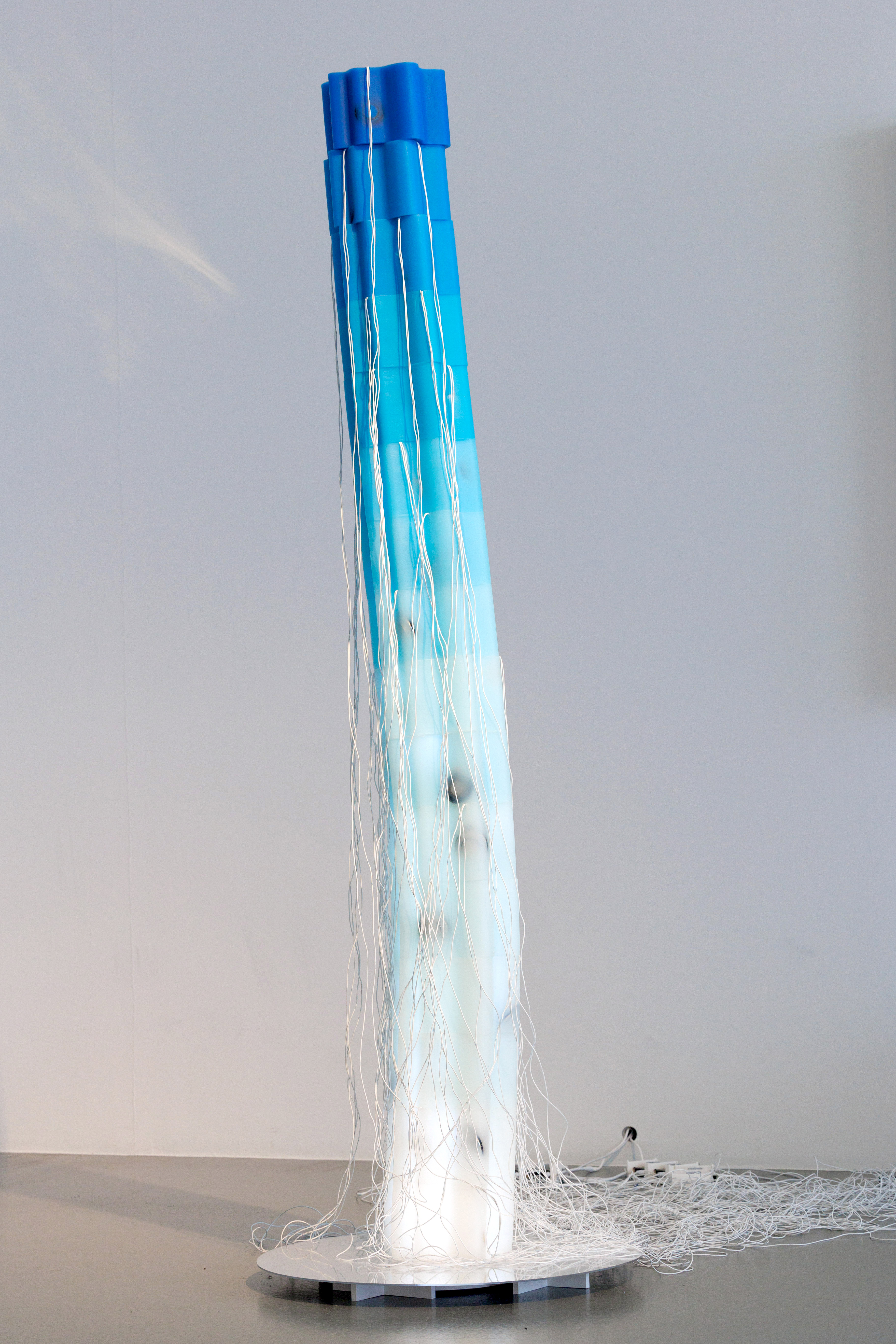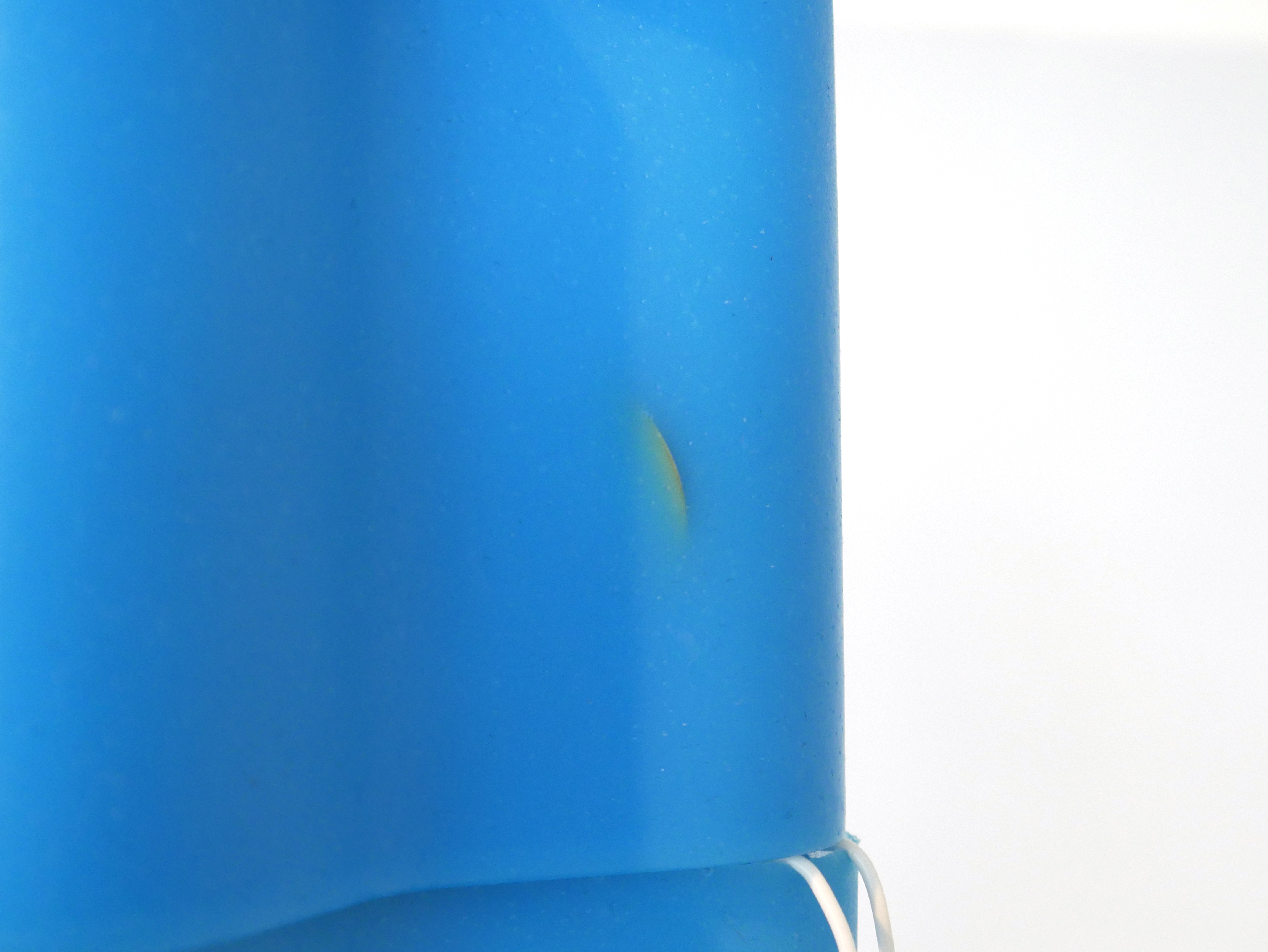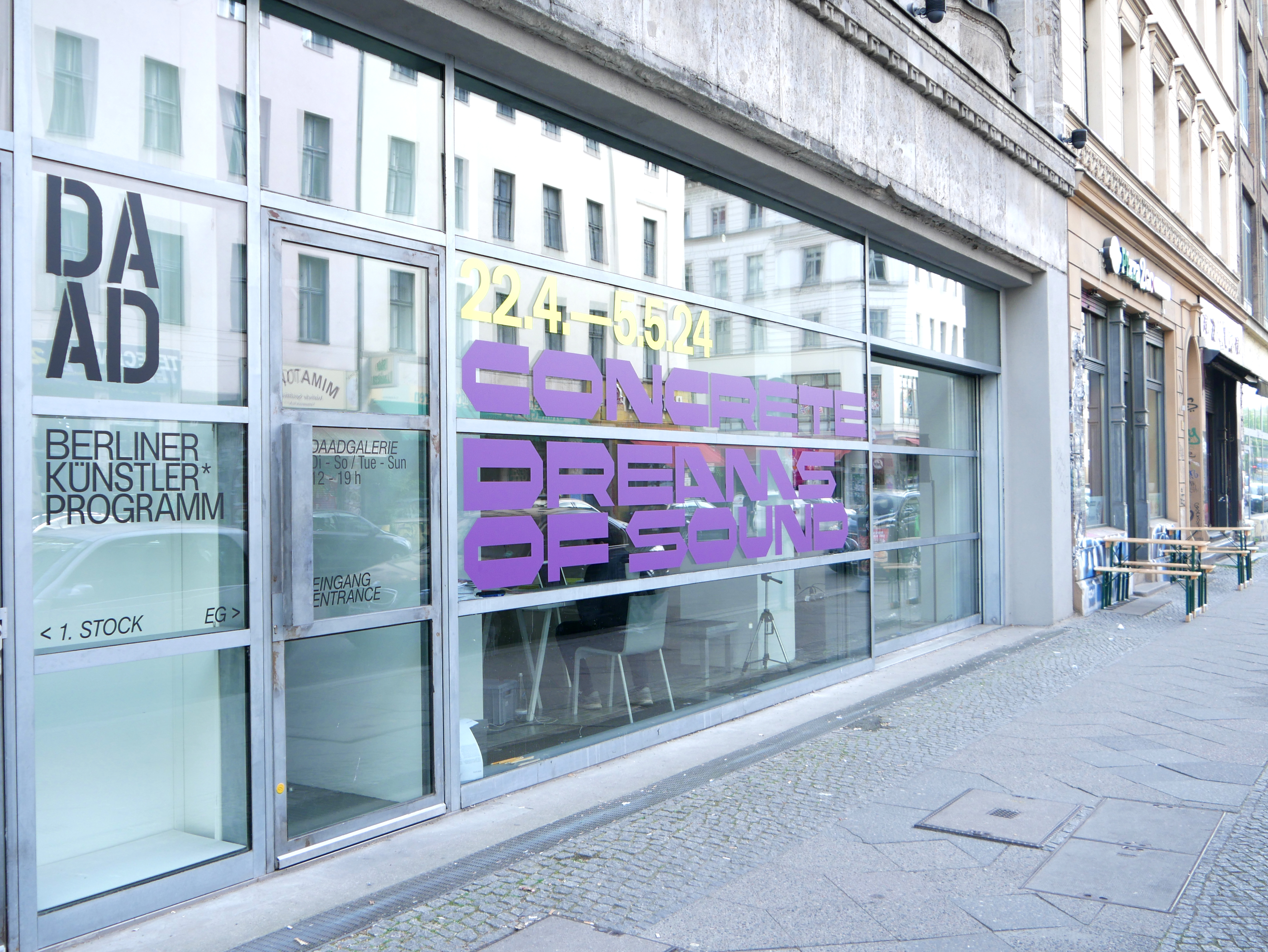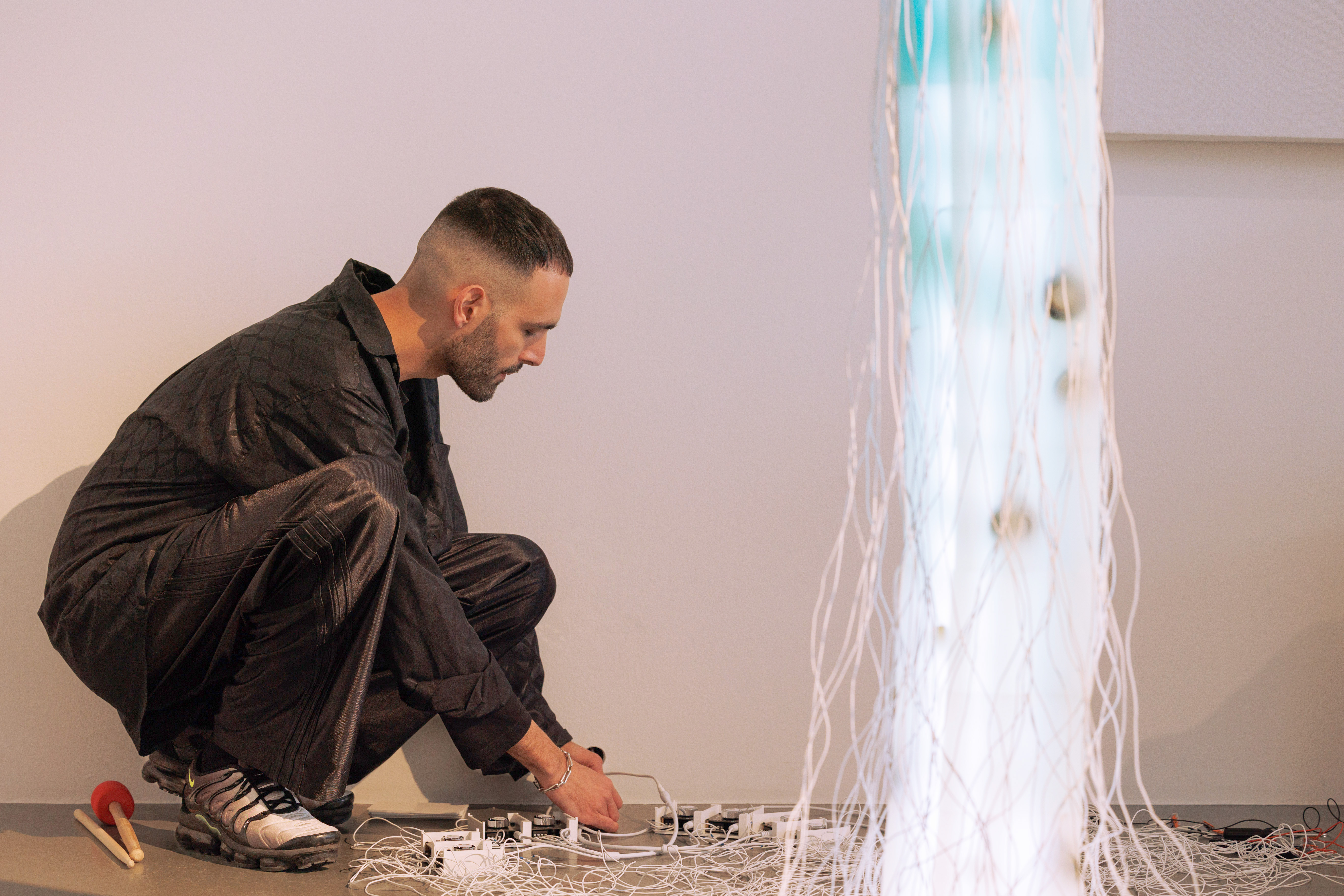


↑ Photos by Eunice Maurice









↓Photos by Eunice Maurice








Sound Installation
Columna(s)
in collaboration with Nicole L´Huiller
Material:
16 silicone blocks (1920x197mm), each block (178x201 mm), 16 shakers speakers, 32 piezos, ca. 308 m white cable, Max Patch, amplifiers, mixer, and headphone
Concrete Dreams of Sound has commissioned a new work by Nicole L’Huillier and Samuel Perea-Díaz, both sound artists with formal training in architecture. Their joint project Columna(s) stems from L’Huillier’s research in devising membranas: listening and/or sounding apparatus that use a variety of materials such as latex, silicone, and even biological materials to ‘activate a vibrational imagination’; Columna(s) equally builds on Perea-Díaz’s practice of probing the sonic potentials of architectural and interior design materials such as glass, concrete, light fixtures, rugs, windows, and walls, which are often reconfigured in unexpected ways.
Columna(s), which takes shape as a set of sixteen silicone blocks into which contact microphones and transducers have been embedded, engages ‘slippery materialities.’ It asks: how would our understanding of sound change if it was transmitted not through ‘perfect’ sound reproduction materials such as those used in hi-fi loudspeaker systems, but instead through wobbly, elastic, jelly-like matter and unstable forms? Further, how might architectural elements such as columns be imagined not only as functional forms, but also as energy-transmitting devices? Currently manifested as a single column, Columna(s) hints at the possibility of an entire pavilion made of sonic matter. As a structure that both emits sound and contains it within dense silicone blocks, it invites an intimate listening, playing with the idea that there is a sound space that is not fully accessible to humans and available more to architecture itself, as though architecture could listen; and suggesting a relational listening with architecture. As such, Columna(s) gets to the heart of the Concrete Dreams of Sound project. Through a process of dialogue, designing, testing, and prototyping, it investigates the sonic capacities of experimental materials, while also asking larger questions about the relationship of sound to architecture, and the potential of sound and listening to reconfigure architectural practice.
CREDITS:
Text by Gascia Ouzounian
Max Patch by Nico Daleman
Production assistance by Ina Richter
Commissioned by SONCITIES
daadgalerie
Oranienstraße 161, 10969 Berlin
22.04-05.05.2024